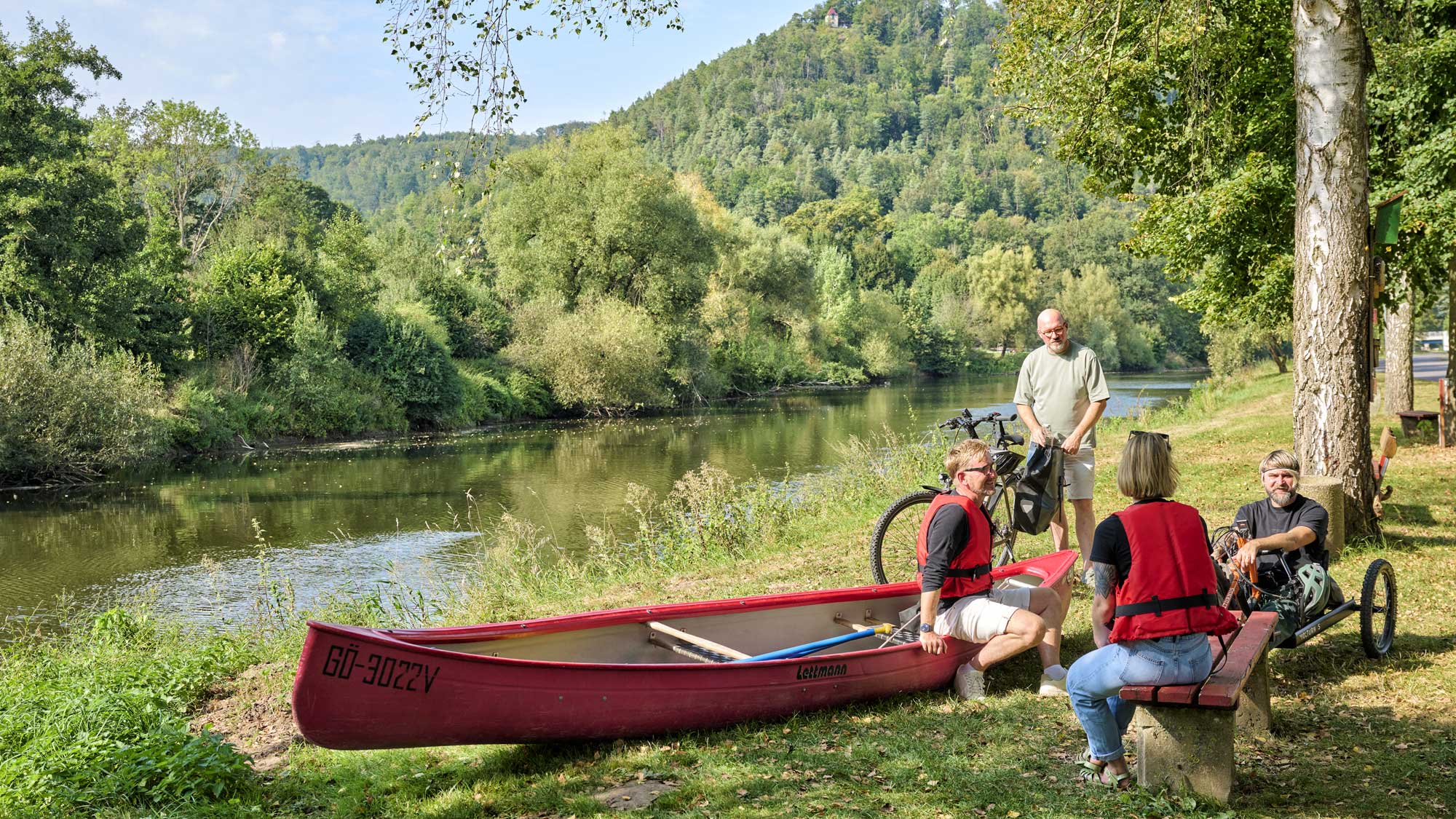You're in the right place! Whether in nature, in the middle of the city, for families, in the countryside, historic or traditional: among Thuringia's TOP hosts, everyone will find exactly the right address.
A history of powerful words
Translating the Bible at Wartburg Castle
Luther's sojourn in what is now called the Luther Room is commemorated by a well-worn desk and an ornate wooden chair. On the wall above them hangs a copy of a Cranach portrait, which shows Luther in his disguise as Squire George, with long hair and a beard. Next to the chair sits a large antique whalebone that used to serve as a footstool.
At first, all that Luther had to read were an Old Testament in Hebrew and a New Testament in Greek. Many of the resources he would have normally had access to in Wittenberg were initially not available to him during his exile at Wartburg Castle. So he concentrated on studying the texts and wrote down his thoughts using quill and ink – probably also by candlelight, well into the night.
Would you like to know how Luther came to be at Wartburg Castle, and what his daily routine would have consisted of?
Luther and the New Testament
Luther's foremost cultural and literary achievement during his stay at Wartburg Castle is without a doubt his translation of the New Testament. Urged on by his friends, he began this work a week before Christmas 1521 and completed it in a mere eleven weeks.
It was a true feat of translation, made even more remarkable by the fact that the Holy Roman Empire had no such thing as a standard written German language and there were hundreds of different dialects. Few people are aware that Luther was not the first person to produce a German Bible translation, but he was definitively the most successful. There had been a number of earlier attempts, but Luther's work, unlike that of his predecessors, spread quickly across all German-speaking countries – thanks to his own celebrity status, his eloquence and powerful choice of words, and to a revolutionary printing process.
New locutions created to last
It was very important to Luther that anyone who could read should be able to study and above all understand the Bible. The source texts of Christianity were not to be reserved for priests, but should be available to ordinary Christians to study for themselves.
Luther's parents wanted him to receive a good education, and he attended Latin school as a young boy. Latin was deemed to be the most important subject for study, being the language of science and of the church. All church services were held in Latin, and only Latin was spoken in schools. In 1504, Martin Luther was a student in Erfurt. There, the 21-year-old found a complete copy of the Bible in the university library. He was so fascinated by it that he learned Hebrew in order to be able to understand it better.
Luther himself was very eloquent, and he endeavoured to make the language of his Bible translation vivid and metaphorical. He didn't simply transpose the original Hebrew and Greek texts word by word, but rather related their meaning in the sort of German spoken by the common people – but without trivialising it. Luther based his work on the written language used by the administration of Saxony, which was understood by bureaucrats, academics, lawyers and clerics, and combined it with phrases that were in general use. As a gifted orator, he was keen to reflect how ordinary people spoke and to create a text using words that even simple folk could read and comprehend.
In the process, he coined commonly used terms and phrases, such as Gewissensbiss (prick of conscience), Denkzettel (a lesson or warning), die Zähne zusammenbeissen (to grit your teeth) and jemanden sein Herz ausschütten (to pour your heart out to someone). He also originated a number of idioms, including Perlen vor die Säue werfen (to cast pearls before swine), which appears in Luther's Bible as Matthew 7:6. His free, idiosyncratic translation of the Bible made a significant contribution to the emergence of a standard written German language, with words that were both relatable and memorable. To this day, the German language retains some of the terms and expressions invented by Luther that made his work so popular at the time.
An exhibition about the power of words - this exhibition looks at Luther's translation of the New Testament, including the practice of interpreting. His translation is examined from a 16th century perspective, but it is also repeatedly compared with contemporary methods. Visitors can test their knowledge of youth slang at interactive stations, explore regional dialects, get a feel for Biblical language and revise texts. In the process they will learn about the challenges of language and translation.
Bible translation and Reformation
Martin Luther's stay at Wartburg Castle ended in March 1522. It was his own decision to come out of hiding, as he wanted to steer the Reformation back onto the right track after the radical wing had gained the upper hand in his absence. Together with Philip Melanchthon and other associates he continued to work on translating the Old Testament over the next ten years. It took until 1534 before the complete translation of the Bible was ready, replacing the plodding style of the original texts with Luther's new, easily comprehensible language.
Take a look at the original Luther Bible.
Martin Luther wrote himself into history in this small room at Wartburg Castle above the town of Eisenach. Hidden away from the Holy Roman Emperor and the church, he translated the New Testament, created a standard German language and (inadvertently) caused a schism in the Christian world.
If you would like more information about Luther's translation of the Bible visit the Luther House in Eisenach.
Headerbild ©Rainer Salzmann, Wartburg-Stiftung
Accessibility
Did you like this story?
Visitors' information
Angebote
Booking
You might also be interested in ...















